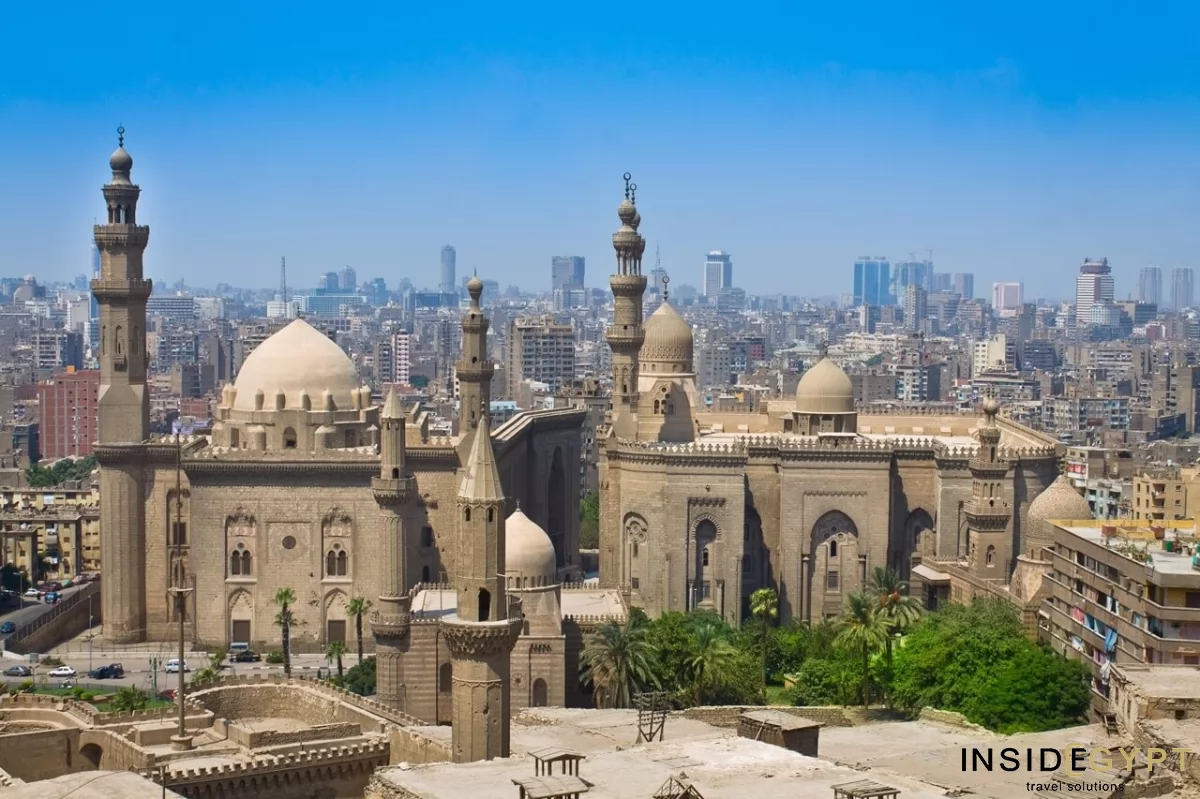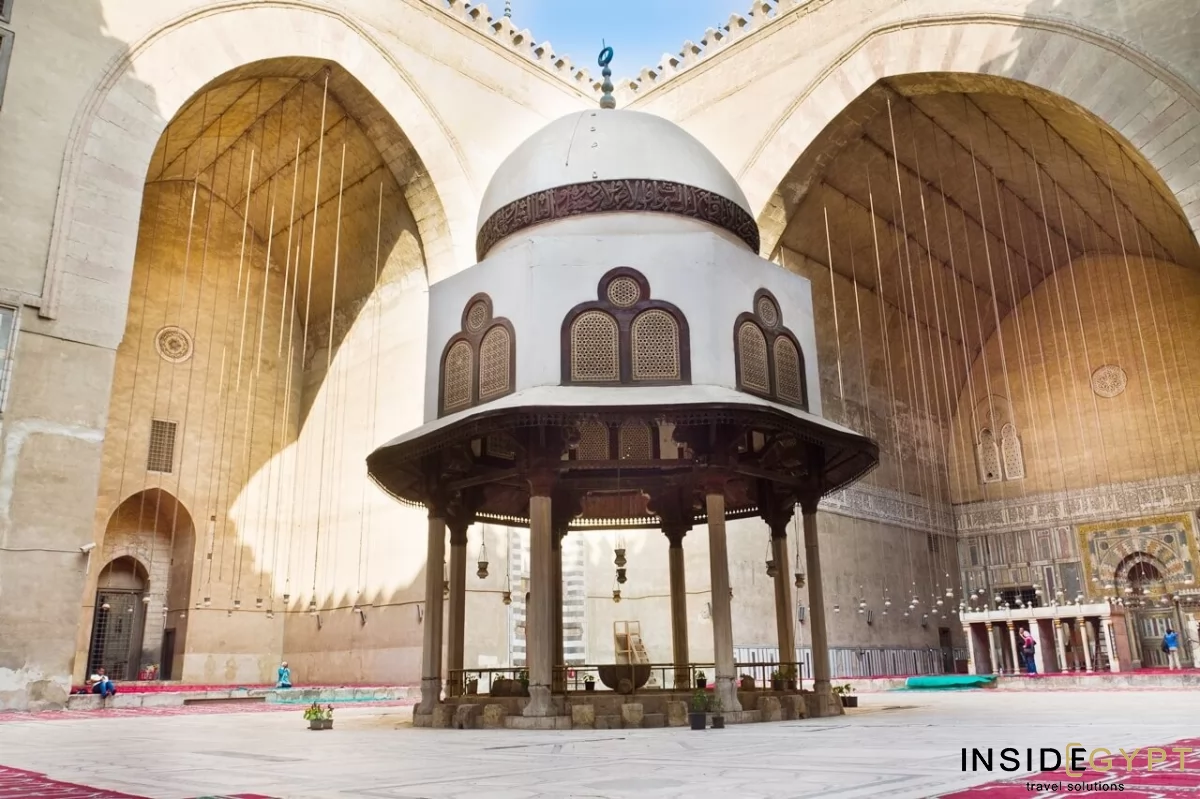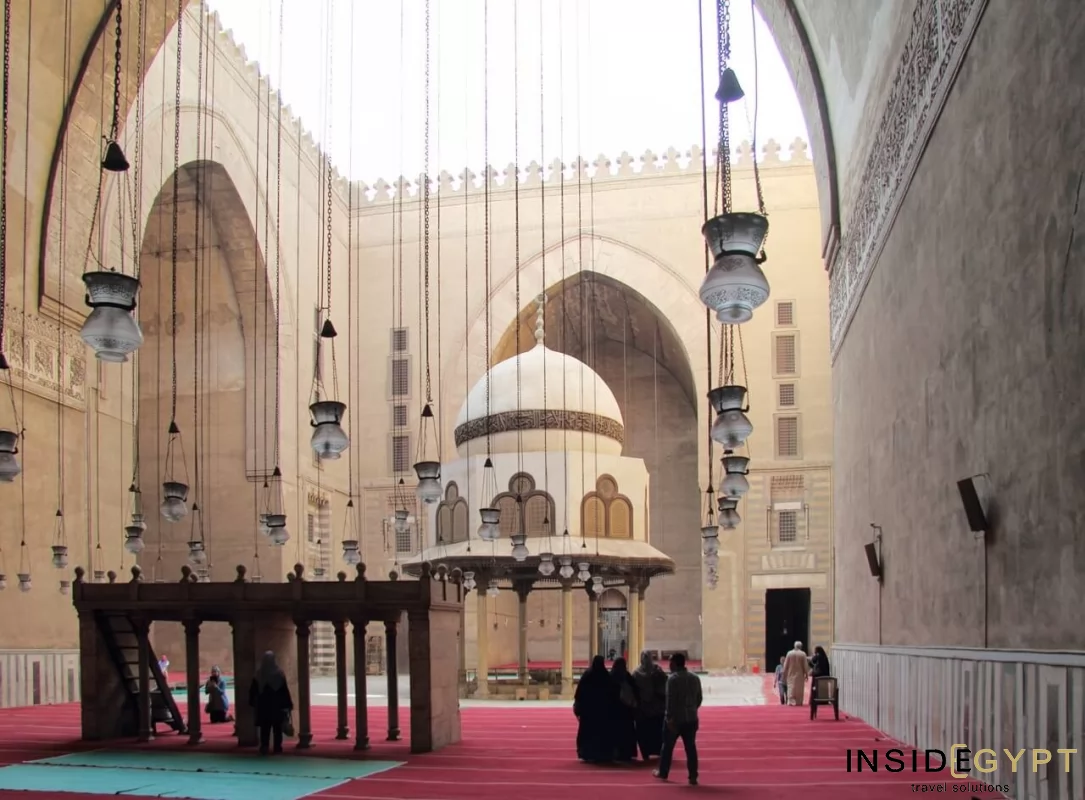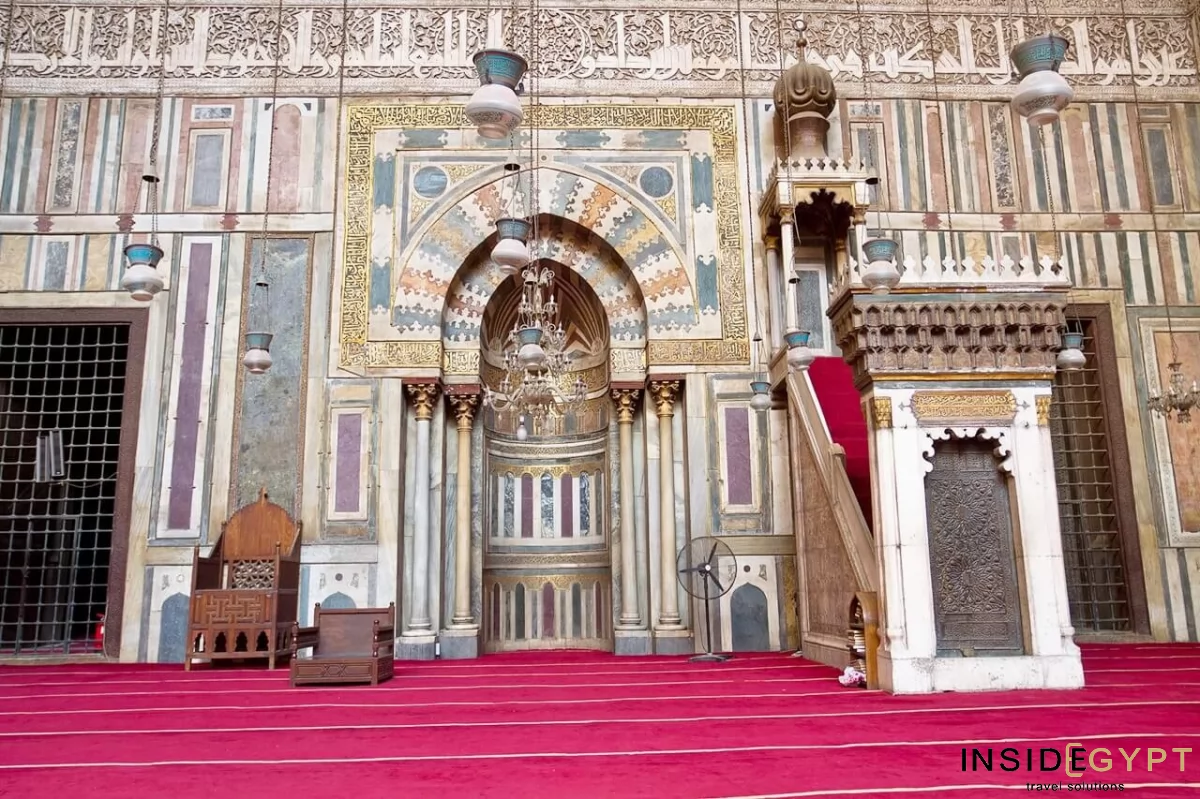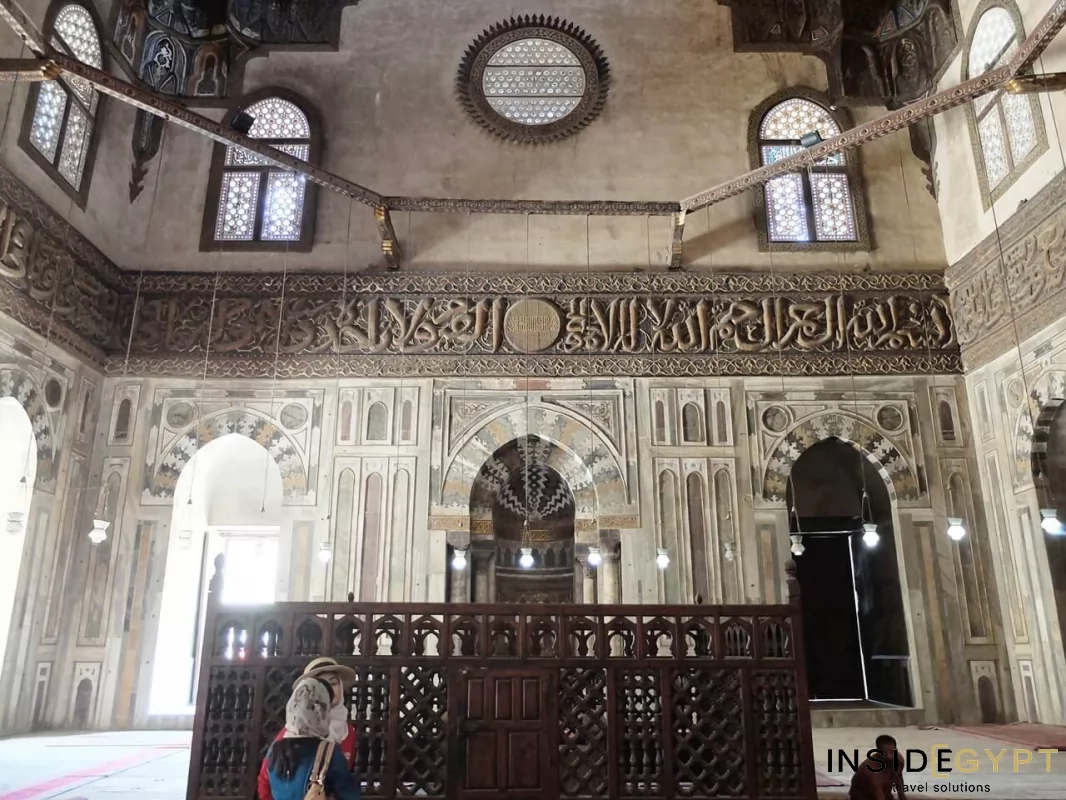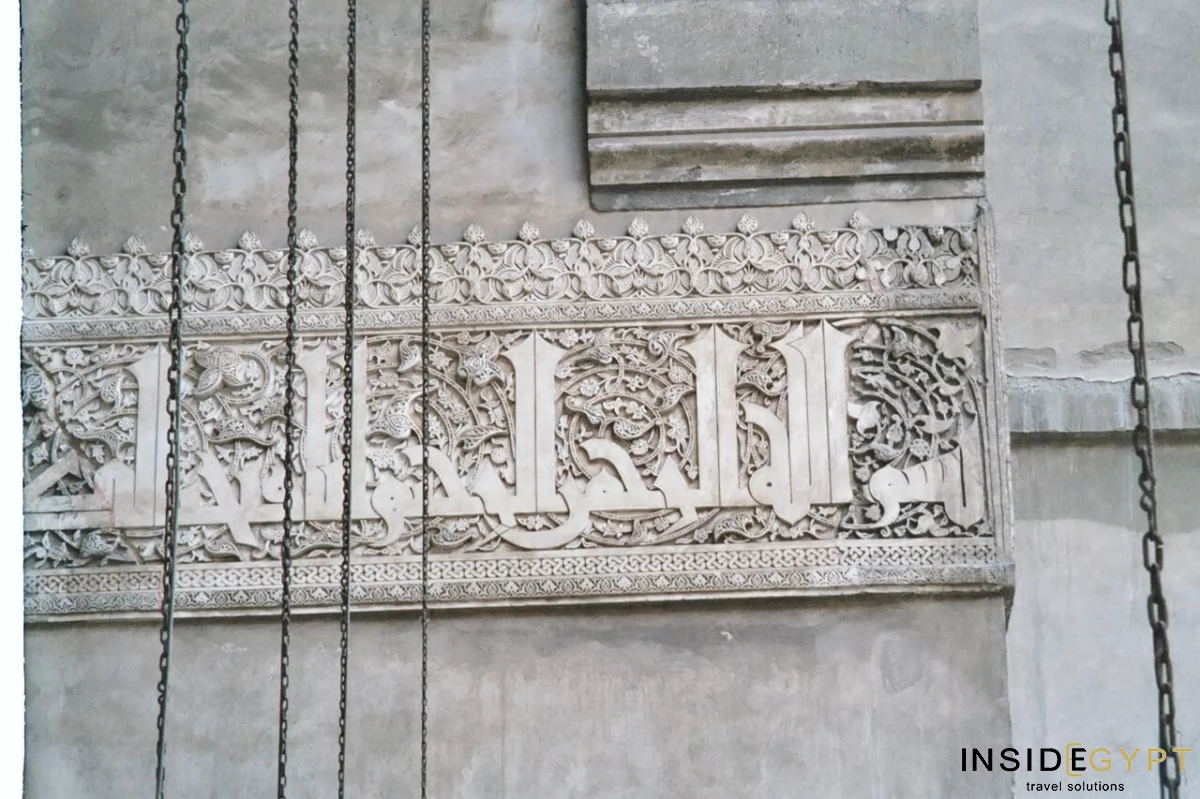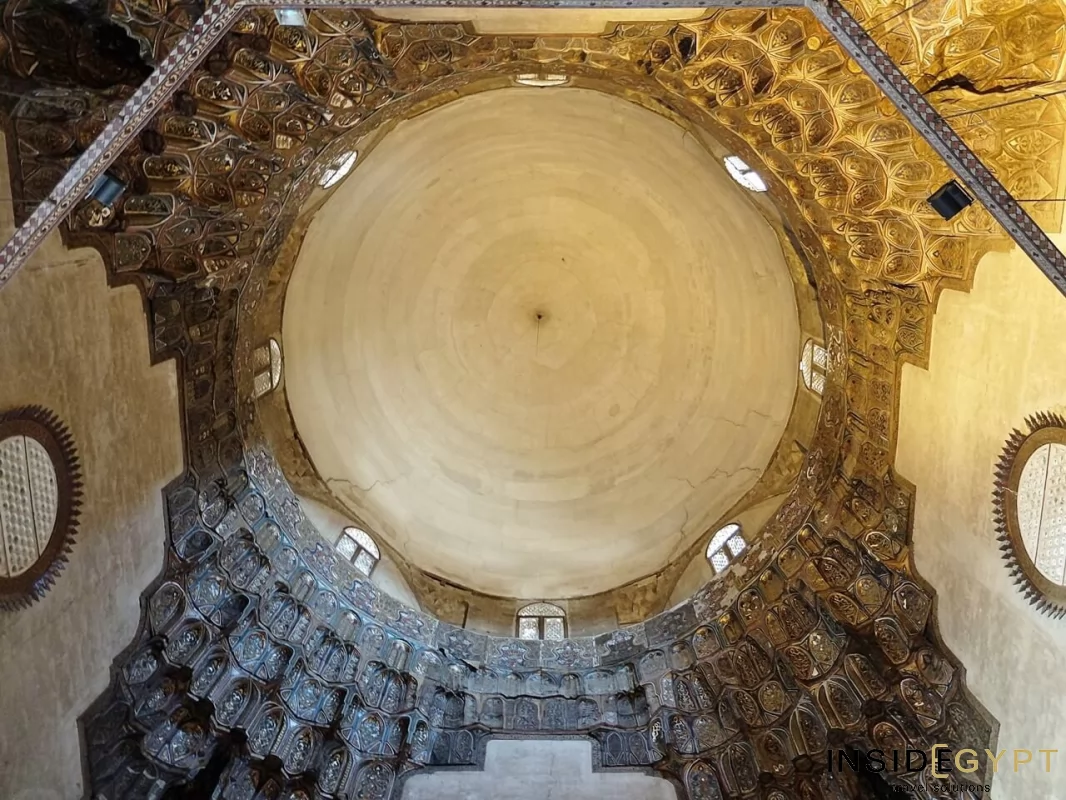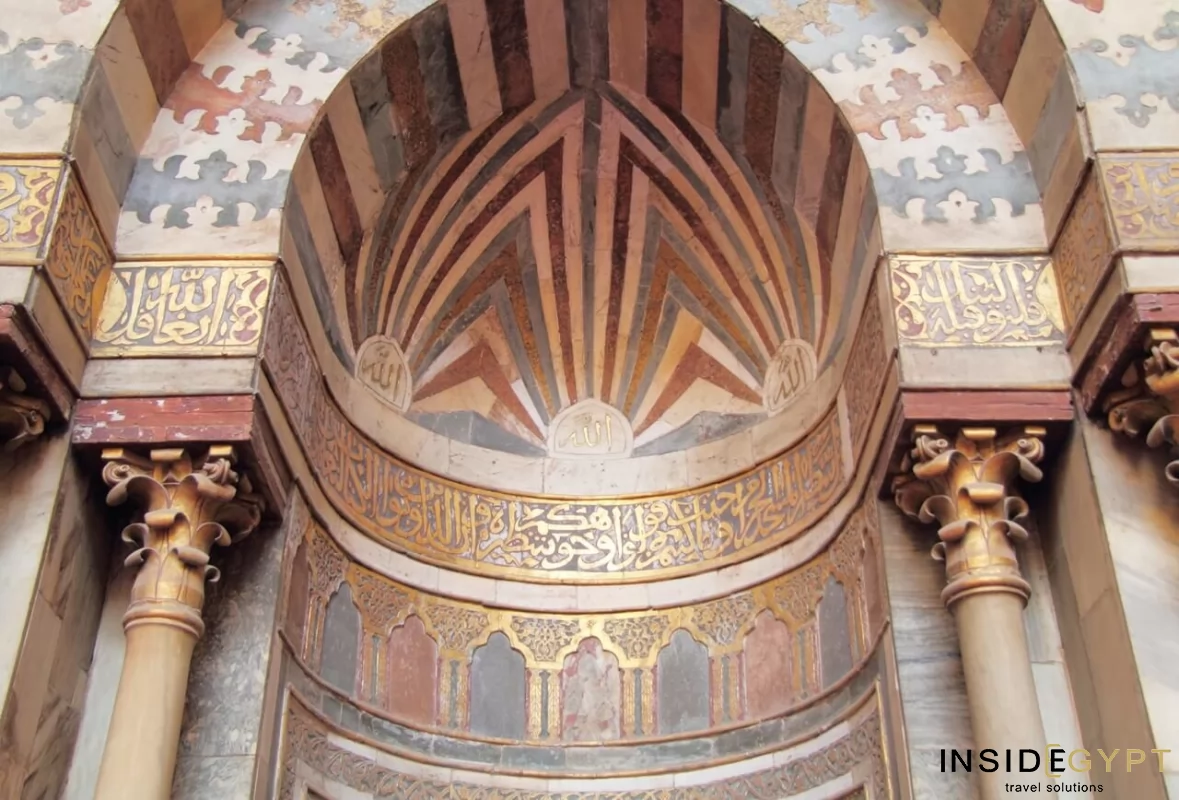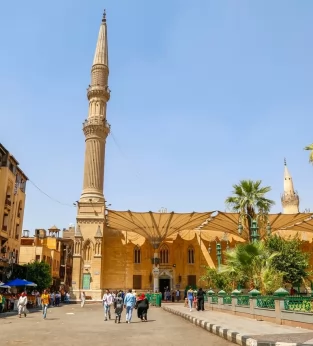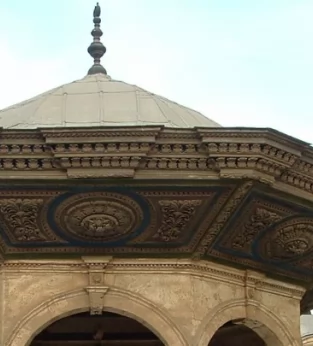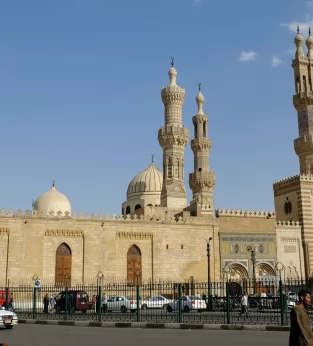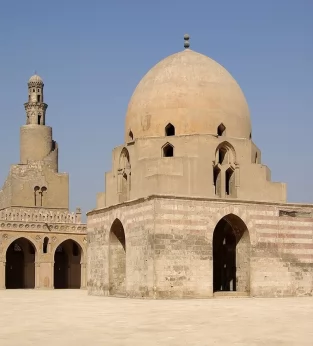Stay updated!
The Sultan Hassan Mosque is situated in the heart of Cairo, Egypt, next to the Citadel, and is one of the city’s most iconic religious structures. Built during the Bahri Mamluk dynasty, it stands prominently along the bustling Salah al-Din Street, making it easily accessible to both locals and tourists. The mosque is named after Sultan Hassan ibn al-Nasir, who commissioned its construction in 1356, as a testament to his reign and devotion to Islam.
The mosque showcases an exquisite example of Mamluk architecture, characterized by its grand scale and intricate details. The design features a vast courtyard surrounded by towering walls, majestic arches, and beautifully decorated iwans (vaulted spaces). The mosque’s four minarets, particularly the soaring eastern minaret that reaches 64 meters in height, exemplify the architectural prowess of the era. Intricate stonework and elaborate calligraphy embellish the façade, creating a visually stunning landmark that captivates all who visit.
Construction of the Sultan Hassan Mosque was completed in 1363, making it a significant historical site in Cairo. It was originally intended to serve as a mosque and a madrasa (Islamic school), which contributed to its status as an educational center. The mosque was also a burial site for Sultan Hassan and later served as a model for various mosques built during the Mamluk period.
The significance of the Sultan Hassan Mosque extends beyond its architectural beauty; it is a vital symbol of Cairo's Islamic heritage. It remains an active place of worship and continues to attract scholars, worshippers, and tourists alike. The mosque's rich history and role in Islamic education underscore its importance as a cultural and religious landmark in Egypt.
